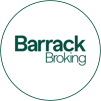The accommodation sector in Australia is an industry exposed to a diverse range of strategic and operational risks. These can vary considerably depending on the style of accommodation, location, transport links, target customer demographic, and ownership structure. In working with a variety of accommodation businesses Barrack Broking have considered the current risk environment, and prepared this ‘Risk Insight’ to provide commentary and guidance around insurer risk concerns. We have also included recommendations for risk management strategies that accommodation investors, owners and operators should consider as they prepare for what lies ahead.
RISK INSIGHT
COVID-19
For owners and operators it is not so much the ‘risk’ associated with this Global pandemic but the operational and financial challenges of navigating the current environment. Lower occupancies and continuously shifting public health restrictions are causing major difficulties and insurers are taking a more conservative standpoint. Often this is through narrower coverage although some insurers have withdrawn from the sector altogether.
Extreme Weather & Natural Catastrophes
There is growing concern that Climate Change is contributing to more volatility and extremity of severe weather events. Perhaps the most recent example of this have been the Black Summer bushfires of 2019/2020. The Insurance Council of Australia (ICA) have reported that insurance claims from the bushfires across New South Wales, Queensland, Victoria, and South Australia numbered 38,181, with estimated losses of $2.32 billion. NSW alone accounted for around 81 per cent of these losses, or $1.88 billion.
Tropical Cyclone and Flood events throughout parts of the country have also seen billions of dollars of damage caused and associated claim payments. Accommodation facilities are situated right across Australia and in most instances may have experience with, or, exposure to some form of extreme weather condition.
Water Damage / Escape of Liquid
Several insurers have reported that losses attributable to damage from faulty pipes and plumbing and the subsequent damage caused are becoming more frequent and costly. This is across both residential and commercial properties. We’ve seen recent examples of plumbing infrastructure in hotels and motels that has deteriorated and led to damage and loss of income.
Fires
Aside from bushfires, our research suggests that over the last 10 years the annual average cost to insurers of fire events to commercial buildings and contents in Australia is around $490 million. Naturally, this is an area of concern for insurers for accommodation facilities and preventative risk management is in focus. Of particular note are cleaning procedures in commercial cooking facilities and electrical system maintenance where failures in these areas have become two of the most frequent ignition sources for fires.
Injury to Patrons
Whilst accommodation businesses are focussed on ensuring their patrons have positive, memorable experiences there are some inherent hazards which can have the opposite effect. The most prevalent issue we see are slips, trips and falls (particularly around car parks) but have seen injuries sustained through food service, and, participation in recreational activities.
These insurer concerns are having an impact on the availability and cost of insurance, and the extent of coverage being offered. Through 2020/2021 there have been a number of insurers that have scaled back their involvement in insuring accommodation risks, imposed embargoes on considering new business, or, exited the market. For the accommodation sector this has typically meant fewer options and higher than anticipated costs.
GUIDE FOR APPROACHING INSURANCE
The heightened focus on and insurer sensitivity to the aforementioned areas of risk means that taking a proactive approach to practical risk mitigation is more important than ever, and, we’ve found that implementing the following suggested processes can demonstrate the resilience of your business and reduce insurance costs.
Timing
Start activities for your next insurance program renewal early. Doing so will allow you to anticipate and respond to any possible challenges and insurer concerns and implement mitigation that can provide demonstrable evidence that these concerns are managed.
Updated Documentation & Information
Ensure you have sufficiently up to date documentation and information on hand to ensure you can put ‘your best foot forward’ when approaching insurers. This may include:
✓ Asset valuations, property reports, inventory, financials
✓ Photos cataloguing your buildings, plant & equipment
✓ Management policies including incident reporting
✓ Annual Fire Safety Statements and confirmation of most recent fire services inspections
✓ Recent certificates or invoices confirming kitchen cleaning
Be Open to Change
Often the way policies have been structured in the past may not be the optimum way to achieve the right balance of coverage versus costs moving forward. We’ve found that even some small changes in policy terms can have a significant impact on the level of interest from insurers and a better balance between coverage and insurance costs.
If you are looking to turn uncertainty into opportunity for your accommodation business contact Graeme Hay ghay@barrack.com.au or Charles Gow-Gates cgowgates@barrack.com.au or call (02) 9191 7320


